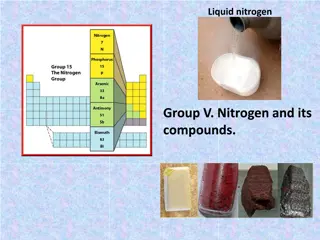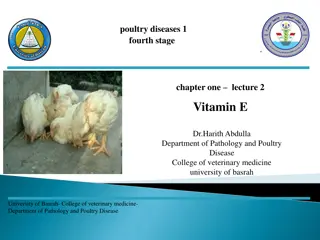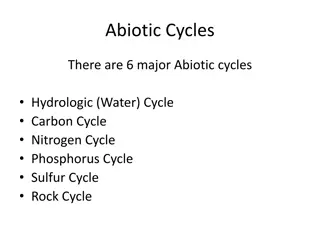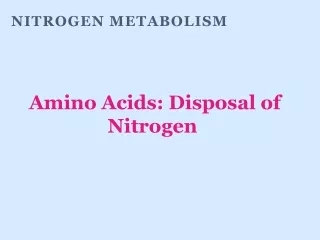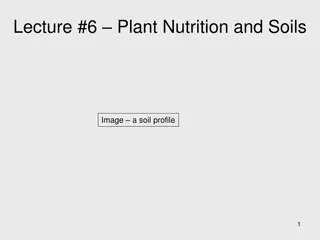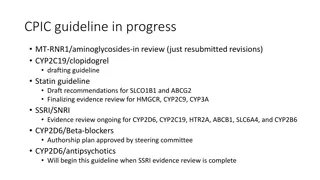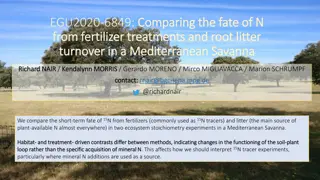Understanding Nitrogen Deficiency in Waterlogged Soils
Explore the impact of waterlogged soils on nitrogen deficiency in plants and discover the role of active transport, soil oxygen displacement, and chlorophyll production. Engage students in solving the issue through an interactive activity that integrates their knowledge of plant biology concepts.
Download Presentation

Please find below an Image/Link to download the presentation.
The content on the website is provided AS IS for your information and personal use only. It may not be sold, licensed, or shared on other websites without obtaining consent from the author. Download presentation by click this link. If you encounter any issues during the download, it is possible that the publisher has removed the file from their server.
E N D
Presentation Transcript
Topic Nitrogen deficiency in water logged soils 1. To describe and explain why waterlogged soils prevent active transport through the displacement of soil oxygen 2. To know that nitrogen is needed to make proteins such as chlorophyll 3. To describe and explain the process of ion leaching Level GCSE (or any other course for students aged 14-16) Outcomes Information for teachers This activity provides a time for students to apply their knowledge of diffusion and active transport to solve a novel problem involving nitrogen deficiency in waterlogged soils. Only use this activity once students have developed a reasonably good understanding of active transport, ion update, respiration and diffusion. Provide time for students to come up with their own solutions to the problem, before providing time for small group discussions. Finally, students use all the information to write an explanation to the problem: why does a plant grown in waterlogged soil have yellow leaves? www.thescienceteacher.co.uk | resources for science teachers who like to think
Plants get their nitrogen from the soil in the form of nitrate ions (NO3-). Plants use nitrogen to make proteins, such as chlorophyll. This plant is nitrogen deficient. How do you know?
Why does a plant grown in waterlogged soil have yellow leaves? Write, think, pair, share
Why does a plant grown in waterlogged soil have yellow leaves? Some ideas to help . Nitrogen is needed to make chlorophyll. The soil is not aerated. Nitrate ions are soluble.
Instructions In each rain cloud there is a partial explanation for why plants grown in waterlogged conditions show nitrogen deficiency. Complete these partial explanations in pairs by providing a more detailed explanation.
Nitrate ions are soluble. This means that .
The soil is not aerated. This means that .
Nitrogen is needed to make chlorophyll. This means that .
Why does a plant grown in waterlogged soil have yellow leaves? Write a paragraph to answer this question. In your answer make sure you have explained: - why nitrate ions need to be absorbed by active transport and not diffusion - why roots in waterlogged soil can t do active transport - why the leaves are yellow
Nitrate ions are soluble. This means that . in waterlogged soil, many nitrate ions will be washed away (leaching). The concentration of nitrate ions in the soil will therefore be lower than inside the root hair cells. This means that the root hair cells will need to take up nitrate ions against a concentration gradient using active transport.
The soil is not aerated. This means that . in waterlogged soil there is not enough oxygen because the air in the soil is displaced by the water. This means that aerobic respiration cannot take place in root hair cells and so there is not enough energy available for active transport of nitrate ions to take place.
Nitrogen is needed to make chlorophyll. This means that if a plant cannot absorb enough nitrate ions it will not have enough nitrogen available to make the green chlorophyll pigment. This will mean the plant leaves will look yellow.










